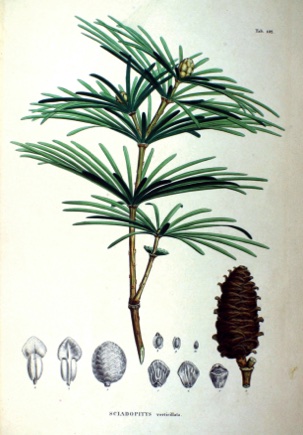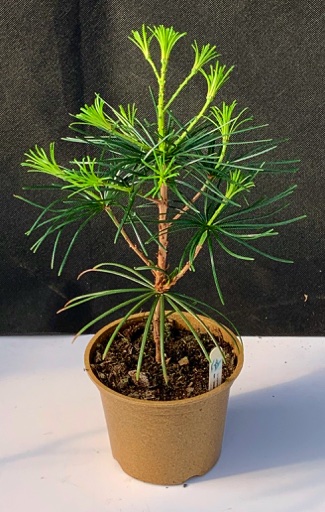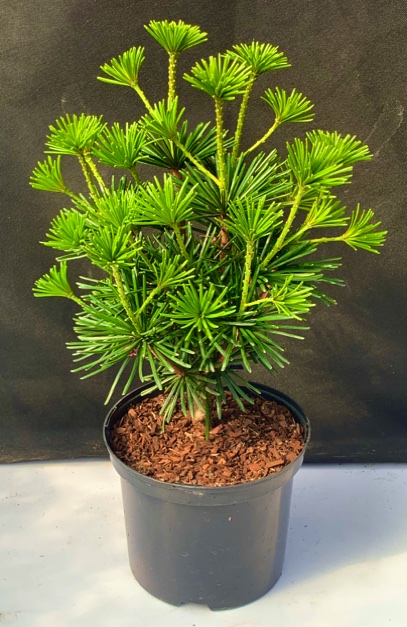Japanese Umbrella Pine
(Sciadopitys Vericillata)
Our larger Japanese Umbrella Pines are available online
from https://www.toddsbotanics.co.uk/ larchfield-trees-acer-specialists/
Japanese Umbrella Pine are a very slow growing long lived tree.
These trees can be grown in a container or in the ground,
in sun or shade. They will grow in most soils that are moisture retaining and well
drained and are lime tolerant. The new growth is a bright green and is slowly
emerging from May until August when it will form darker umbrella shaped rosettes.
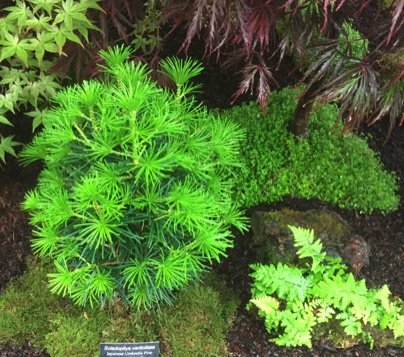
Being the only surviving member of the Sciadopitys verticillata family these 1 Lt trees are grown from seed but there are many other varieties that are grafted onto the original seedling understock some of these varieties are shown below.
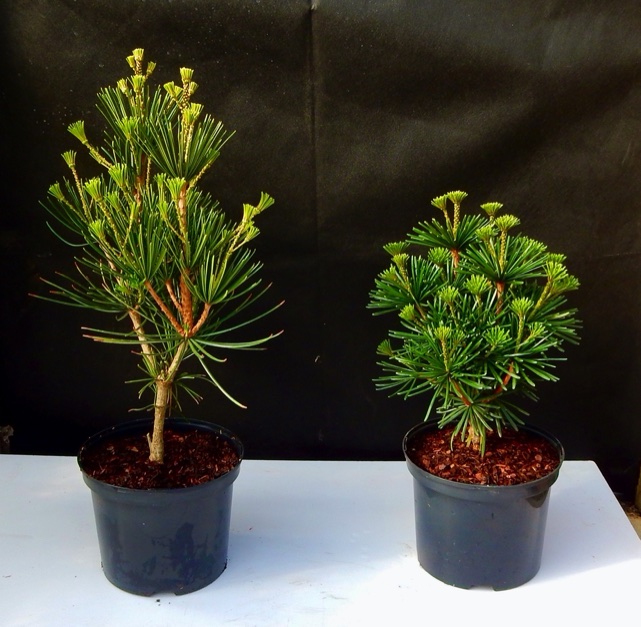
Sciadopitys verticillata
Eifell Tower
Sciadopitys verticillata
Sternschnuppe (Shooting Star)
An excellent evergreen companion plant for Japanese Maples
Grows in a conical style and has a paler stripe on the underside of the needles. More of an open style than Sternschnuppe.
Also grows in a conical style but has a more structural habit with an abundance of rosettes giving the affect of shooting stars. Slightly more compact than Eifell Tower.
Larger Varieties
Fascinating Facts about Umbrella Pines
Did you know!!
The third ice age destroyed the many known species of Umbrella pines but the warm volcanic soils of the Kiso valley in Japan managed to sustain the one and only unique species now known as Sciatopitys Verticillata
Fossil records show that it dates back 230 million years and is classed as a "living fossil"
The Japanese name is "Koyo-maki"
It is a sacred tree in Japan and has been worshipped for hundreds of years, a Buddhist temple now standing in the area of the original sacred tree
It is slow growing and monoecious (self pollinating) which contributes to its rarity
Legend has it that stroking the whorls will result in conceiving healthy children
Due to its natural rot-resistant and waterproof properties it has been used in ship building
As the tree ages it can produce cones which remain on the tree for up to 18 months before the seeds ripen. All named varities have to be grafted onto 3-4 year old seedling trees
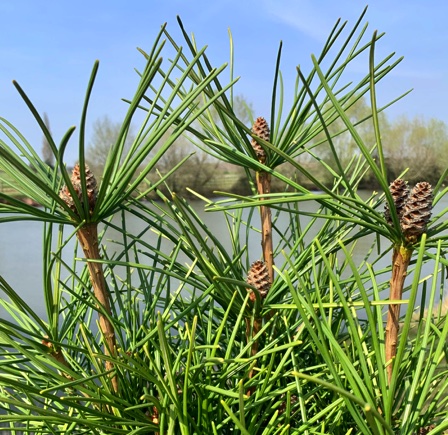
New cones forming in April will produce seed in 18 months time
